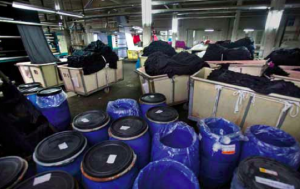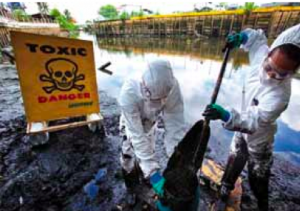 In the wake of renewed consumer concern about the chemicals used in clothes and footwear and their potential for harmful effect on both individuals and the environment, national and international regulatory frameworks such as REACH and CPSIA have been created with the aim of restricting and prohibiting the use of such substances. Restricted substances now abound within the textile industry in the light of consumer awareness.
In the wake of renewed consumer concern about the chemicals used in clothes and footwear and their potential for harmful effect on both individuals and the environment, national and international regulatory frameworks such as REACH and CPSIA have been created with the aim of restricting and prohibiting the use of such substances. Restricted substances now abound within the textile industry in the light of consumer awareness.
Restricted substances, including harmful chemicals, can pose grave danger to people, the environment and companies using them. The recall of a product for use of dangerous substances can cause irretrievable damage to a company’s reputation. Greenpeace International, for example, in its recent publication, ‘Dirty Laundry 2: Hung Out to Dry’, focused on the use of the chemical nonylphenolethoxylate (NPE) and its release into the environment from its use in the manufacture of clothes and footwear. The example highlights how concern over chemicals doesn’t impact merely at the point of production. It can also come up at the point of sale, affecting both company sales and consumer choice.
Many restricted substances are of the group considered harmful to the environment and unfit for public exposure, creating new challenges for companies that manufacture and sell clothes and footwear. The industry has reacted by implementing an integrated approach and presenting a united front as it meets the requirements posed by local and international manufacturing regulation, international standards, chemical specifications and consumer product regulation. Hazardous chemicals now have to be identified and assessed throughout the entire supply chain.
It is therefore of the utmost importance that the control and management of risk is undertaken at every point along the supply chain so as to ensure that the final product has minimal, if any, impact on public health and the environment. Stringent quality assurance systems are required to ensure that products adhere to the required standards from source to appearance on the market.
 Vital elements to the process of quality assurance include factory system reviews, documentation verification, operation control and an assessment of the suppliers of raw materials. The management and evaluation of raw materials and chemicals, including chemical substances and their components therein, is also of utmost importance in a thorough and stringent quality assurance system. Mechanisms that enable the consistent and fair evaluation of new components and suppliers also need to be established in order to ensure that no restricted chemical substance poses a threat to the quality of the finished product or even makes an appearance on the production line.
Vital elements to the process of quality assurance include factory system reviews, documentation verification, operation control and an assessment of the suppliers of raw materials. The management and evaluation of raw materials and chemicals, including chemical substances and their components therein, is also of utmost importance in a thorough and stringent quality assurance system. Mechanisms that enable the consistent and fair evaluation of new components and suppliers also need to be established in order to ensure that no restricted chemical substance poses a threat to the quality of the finished product or even makes an appearance on the production line.
To increase a manufacturer’s competitiveness whilst building the brand image and enhancing the company’s reputation, not to mention making their product stand out from the rest, there is nothing better than showing that a company takes its environmental responsibilities seriously.
SGS has extensive experience within the regulatory field and has the expertise and thorough knowledge of the regulation that seeks to protect the environment from chemicals used in manufacture. SGS experts (http://www.sgs.com/softlines) can help manufacturers to take action that will form the blueprint plan a company uses in its quest for chemical control.
SGS is the world’s leading inspection, verification, testing and certification company. It is recognized as the global benchmark for quality and integrity. With 67,000 employees, SGS operates a network of over 1,250 offices and laboratories around the world.